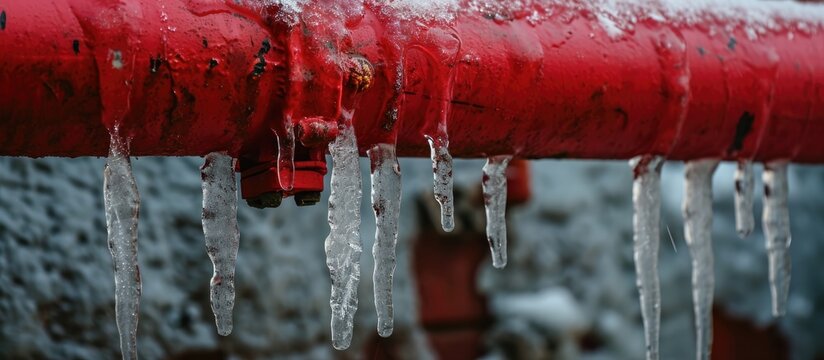Each person is bound to have his or her own way of thinking with regards to Winter Plumbing Precautions: Preventing Frozen Pipes.

Cold weather can ruin your pipes, especially by freezing pipelines. Right here's how to stop it from occurring and what to do if it does.
Intro
As temperatures decline, the risk of icy pipelines increases, potentially bring about costly repair services and water damages. Understanding just how to avoid frozen pipes is vital for property owners in chilly climates.
Comprehending Frozen Pipes
What creates pipelines to freeze?
Pipelines ice up when revealed to temperatures listed below 32 ° F (0 ° C) for expanded durations. As water inside the pipes ices up, it broadens, putting pressure on the pipe wall surfaces and potentially creating them to burst.
Risks and problems
Frozen pipelines can bring about water system disruptions, home damage, and costly repairs. Burst pipelines can flood homes and trigger substantial structural damages.
Indications of Frozen Water Lines
Identifying frozen pipelines early can prevent them from rupturing.
Exactly how to identify icy pipes
Search for lowered water flow from taps, unusual smells or noises from pipes, and noticeable frost on revealed pipelines.
Prevention Tips
Insulating at risk pipes
Wrap pipes in insulation sleeves or utilize warmth tape to protect them from freezing temperatures. Focus on pipes in unheated or outside areas of the home.
Heating techniques
Keep interior spaces effectively heated up, particularly locations with plumbing. Open cupboard doors to permit warm air to circulate around pipelines under sinks.
Protecting Outdoor Plumbing
Garden tubes and outside faucets
Separate and drain pipes yard tubes prior to wintertime. Set up frost-proof spigots or cover exterior faucets with insulated caps.
What to Do If Your Pipelines Freeze
Immediate actions to take
If you believe frozen pipes, maintain taps open up to soothe stress as the ice melts. Make use of a hairdryer or towels taken in hot water to thaw pipelines slowly.
Long-Term Solutions
Architectural modifications
Consider rerouting pipelines away from outside walls or unheated locations. Add added insulation to attics, cellars, and crawl spaces.
Upgrading insulation
Purchase high-quality insulation for pipelines, attics, and wall surfaces. Correct insulation helps preserve regular temperatures and minimizes the threat of frozen pipes.
Final thought
Avoiding icy pipelines calls for proactive steps and quick actions. By recognizing the reasons, indicators, and safety nets, house owners can secure their pipes throughout winter.
6 Proven Ways to Prevent Frozen Pipes and Protect Your Home
Disconnect and Drain Garden Hoses
Before winter arrives, start by disconnecting your garden hoses and draining any remaining water. Close the shut-off valves that supply outdoor hose bibs and leave the outdoor faucet open to allow any residual water to drain. For extra protection, consider using faucet covers throughout the colder months. It’s also important to drain water from any sprinkler supply lines following the manufacturer’s directions.
Insulate Exposed Pipes
Insulating your pipes is an effective way to prevent freezing. Pipe insulation is readily available at home improvement stores and is relatively inexpensive. Pay close attention to pipes in unheated areas such as the attic, basement, crawl spaces, or garage. Apply foam insulation generously to create a buffer against the cold. You can also wrap your pipes in heat tape or thermostat-controlled heat cables for added warmth.
Seal Air Leaks
Inspect your home for any cracks or openings that could let in cold air. Seal any holes around the piping in interior or exterior walls, as well as the sill plates where your home rests on its foundation. Additionally, make sure to keep your garage door closed unless you’re entering or exiting. Leaving it open creates a significant air leak that can lead to frozen pipes.
Allow Warm Air Circulation
During cold snaps, it’s essential to allow warm air to circulate evenly throughout your home. Leave interior doors ajar to promote better airflow. Open kitchen and bathroom cabinets to help distribute heat consistently around the rooms. If you have small children or pets, be sure to remove any household chemicals or potentially harmful cleaners from open cabinets for safety.
Let Faucets Drip
A small trickle of water can make a big difference in preventing ice formation inside your pipes. When temperatures drop significantly, start a drip of water from all faucets served by exposed pipes. This continuous flow helps prevent the water from freezing. Additionally, running a few faucets slightly can relieve pressure inside the pipes, reducing the chances of a rupture if the water inside does freeze.
https://choateshvac.com/6-proven-ways-to-prevent-frozen-pipes-and-protect-your-home/
.jpg)
Do you appreciate reading about How to Prevent Your Pipes From Freezing? Give feedback down the page. We would be pleased to find out your insights about this page. Hoping to see you back again before long. Sharing is good. One never knows, you will be doing someone a favor. Thanks a lot for going through it.
Order Repair
Comments on “Preventing Frozen Plumbing: Best Methods for Cold Weather”